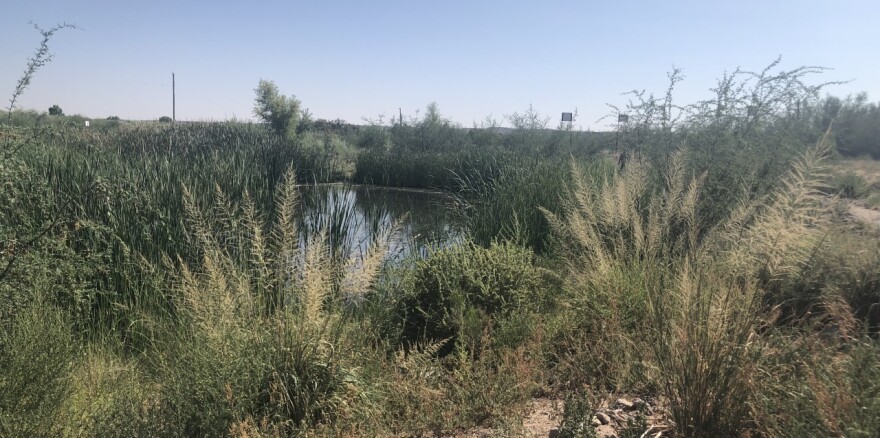https://www.youtube.com/watch?v=xKp7IfGIVYc&feature=youtu.be
When you think of the typical Southwest landscape, the first picture in your head isn’t often a thriving wetland.
Yet, wetlands are vital to the ecosystem, making up approximately one million acres statewide, according to New Mexico’s Environment Department.
If you know where to look, you can find these habitats not far from the city center. Kevin Bixby, the executive director of The Southwest Environmental Center, has worked with his team to create the La Mancha Wetland in Las Cruces through restoration projects.
“We've created this oasis, this wetland, that when we started was a pile of dirt,” Bixby said. “There was nothing here, but groundwater is not very far down. And this is essentially the same water that's in the river.”
Bixby says the goal was to replicate the type of wetlands that existed before the Rio Grande was dammed. The undammed river would change course frequently, creating wetland areas across the state.
“Over the past century, the river here has been so heavily modified for human purposes, that all of the ecological benefits and the aesthetic benefits that it once provided, most of them have disappeared,” Bixby said.

The New Mexico Environment Department is working to combat that with funds received by the Environmental Protection Agency. The EPA allocated approximately $400,000 dollars for wetland protection in the state.
Maryann McGraw is the New Mexico Environment Department Wetland Program Coordinator. She says the EPA money will go in part toward remapping efforts of wetland areas, which haven’t been updated in years.
“The main project that it's going to fund is to expand our monitoring and assessment program with a new plan. Our last plan was in 2012,” McGraw said. “We're going to continue to monitor those wetlands and hopefully track wetland losses and wetland increases over the years with new monitoring protocols...We're going to also look at water quality standards for wetlands and improve those and ultimately end up with a plan for a Wetland Protection Act for New Mexico.”
McGraw says the department is only now starting to get an accurate count of how many wetlands are in New Mexico, due to advances in technology that have led to increased mapping efforts. The department is also trying to discover the amount of wetland loss in the state. While she says it’s too early to guess a number, McGraw expects the loss will be large.
“We need to protect any of the water resource that we have, especially wetlands that are really integral to keeping water clean, preventing large scale floods and recharging our groundwater resources and providing habitat,” McGraw said.
While excited about any new conservation efforts, Kevin Bixby says he’s worried about how the loss of water in the state will impact the environment.
“I'm very worried about the future of water in New Mexico,” Bixby said. “Climate change is a real thing, and we're not moving very fast to deal with it. And that means there will be less water in the river. That's the new normal.”
And Bixby says for those wondering why, during a pandemic, they should care about wetland protection, The Southwest Environmental Center executive director believes he has a pretty compelling reason.
“The well-being of human beings depends on natural ecosystems,” Bixby said. “These natural systems provide us, and every form of life on the planet, with free services. They provide clean air, they provide clean water, they provide nutrient recycling, soil building, flood control. They provide us with food. They provide us with medicines. So, we really, although we may not be aware of it most of the time, the well-being and the future of human beings on the planet depend on us protecting and restoring these natural systems.”



